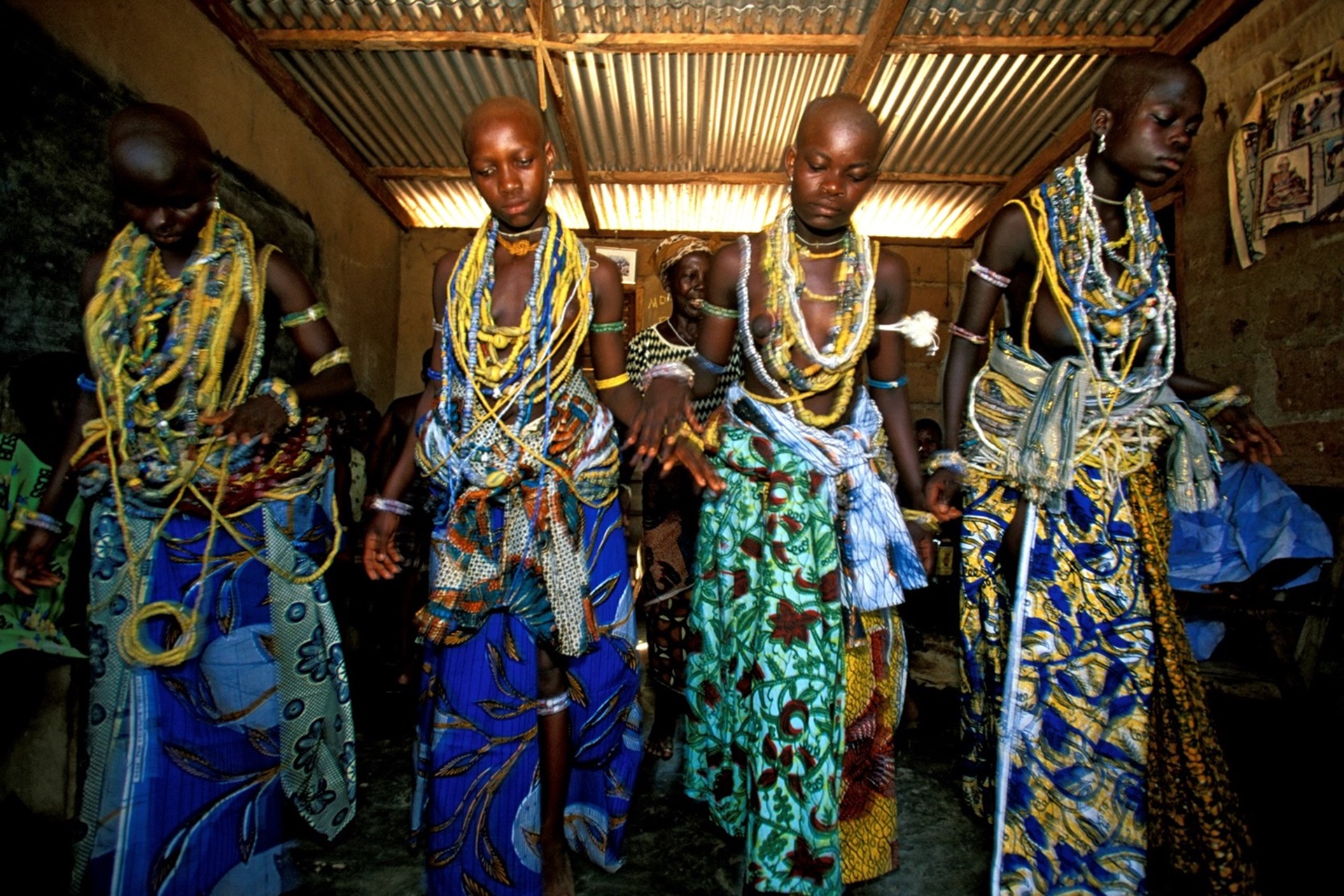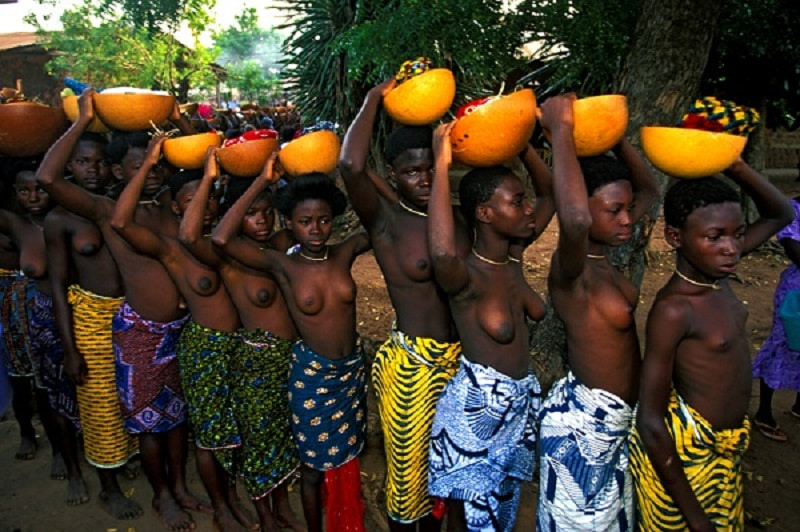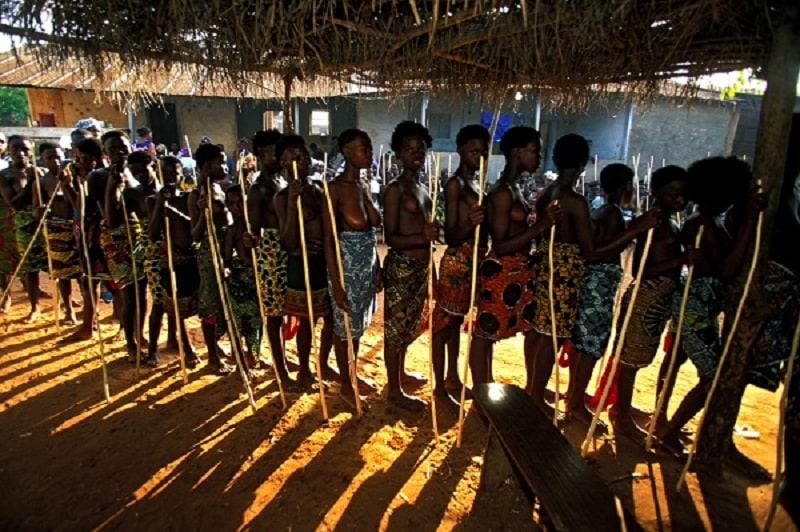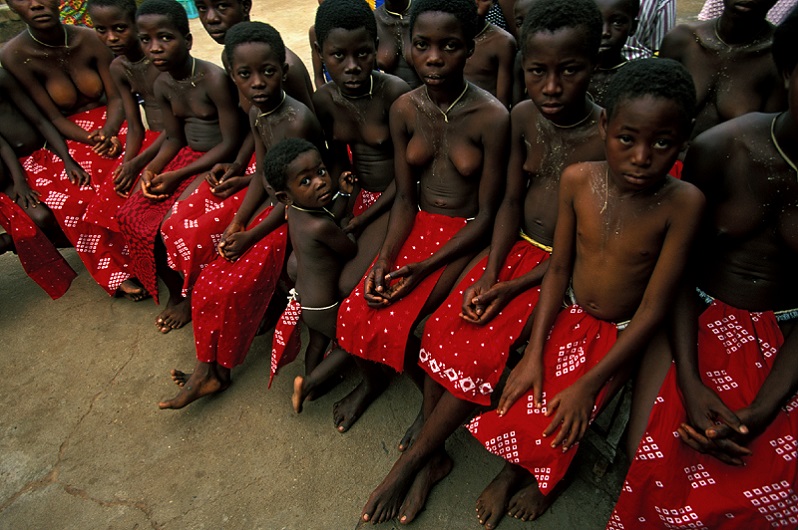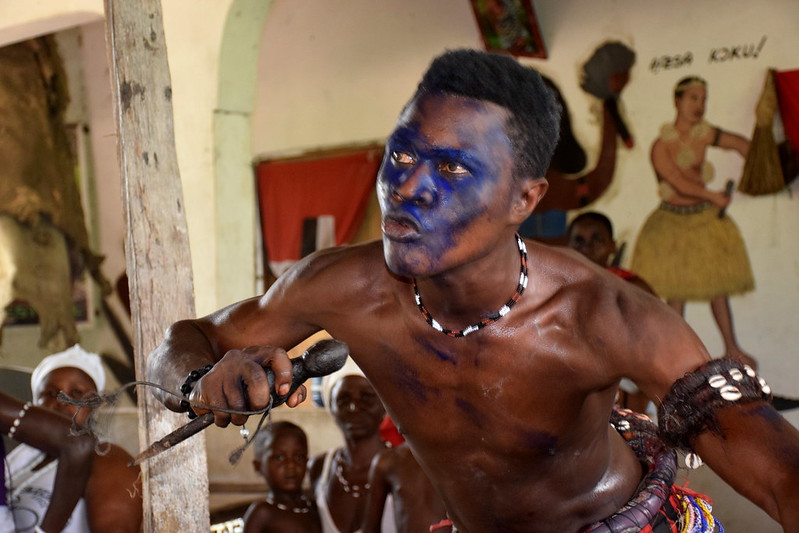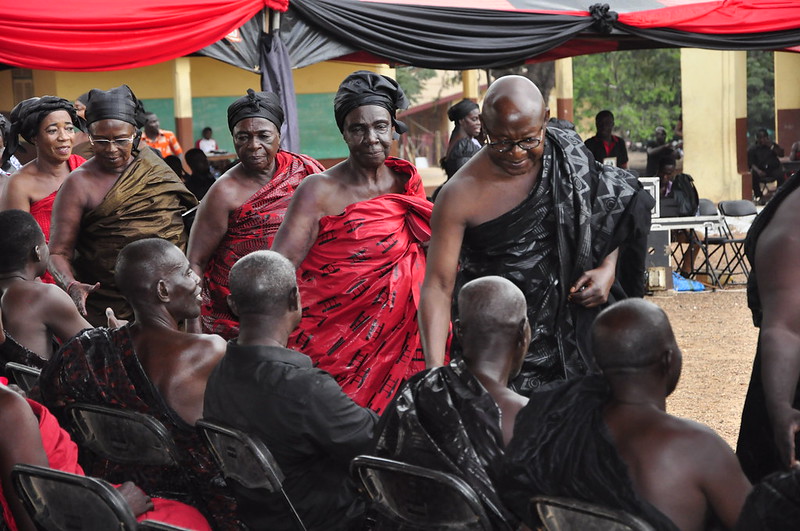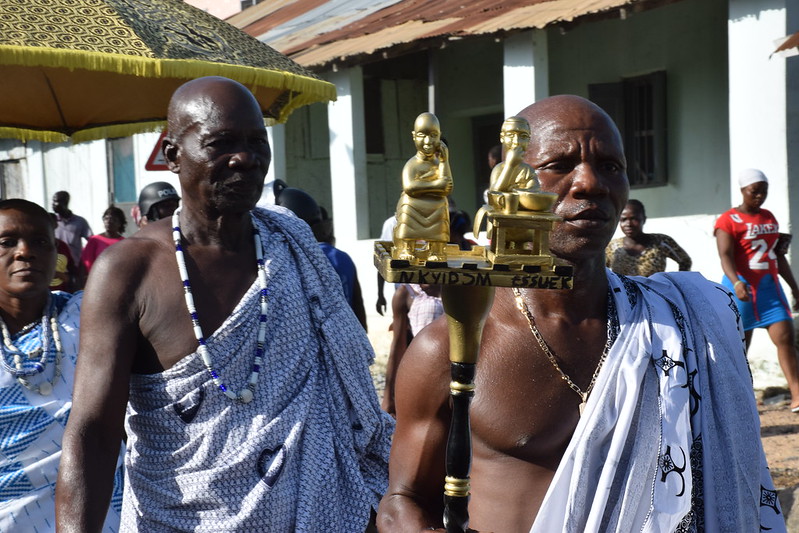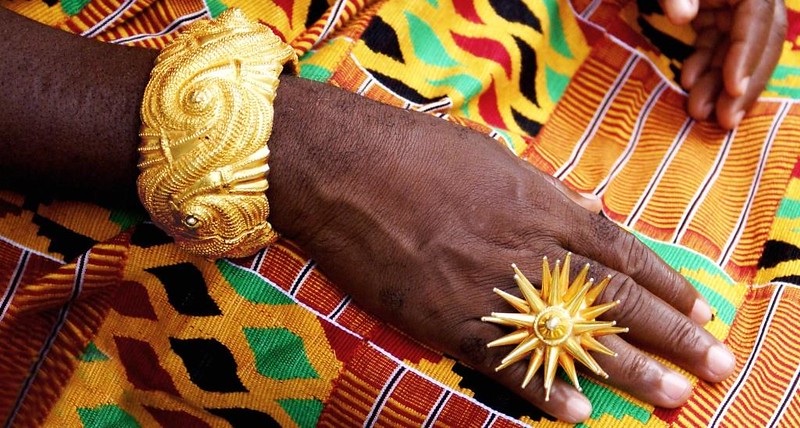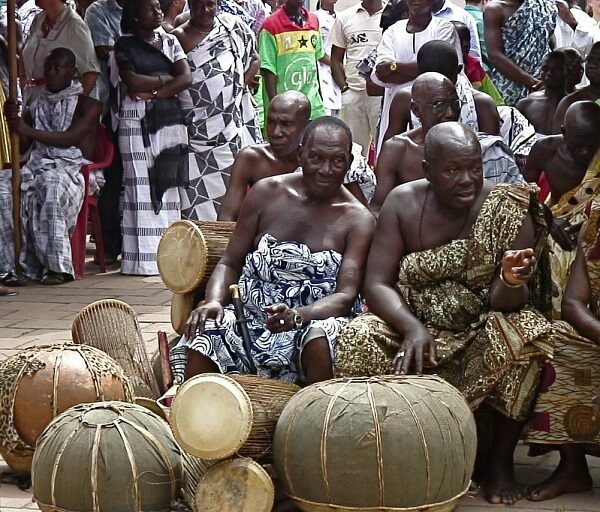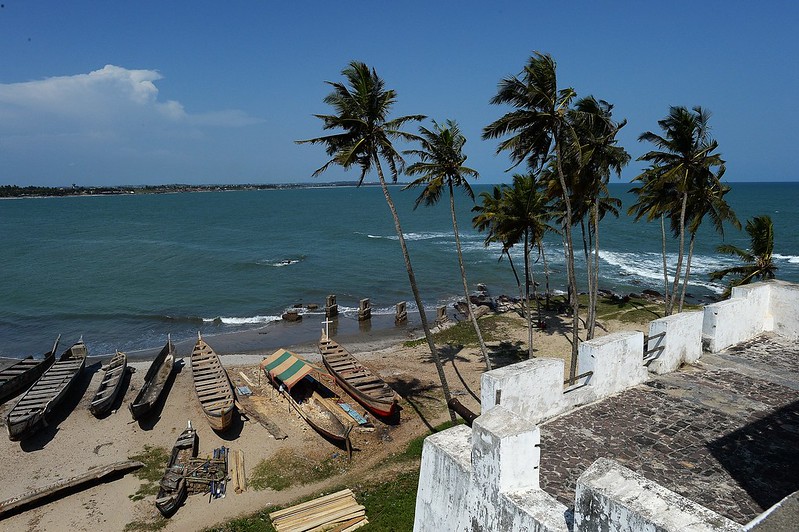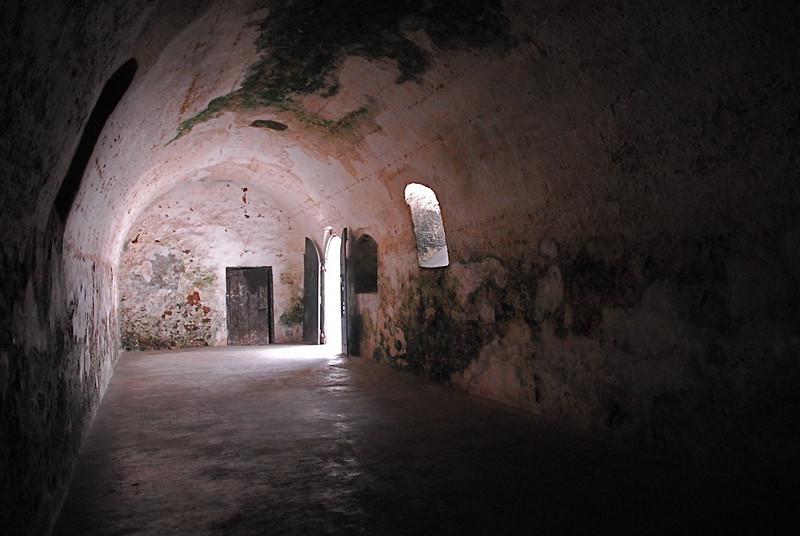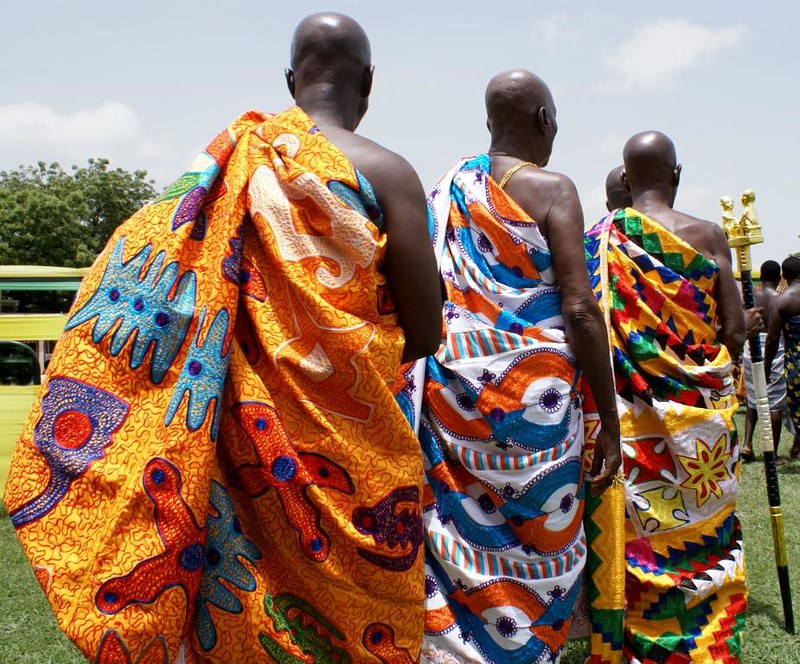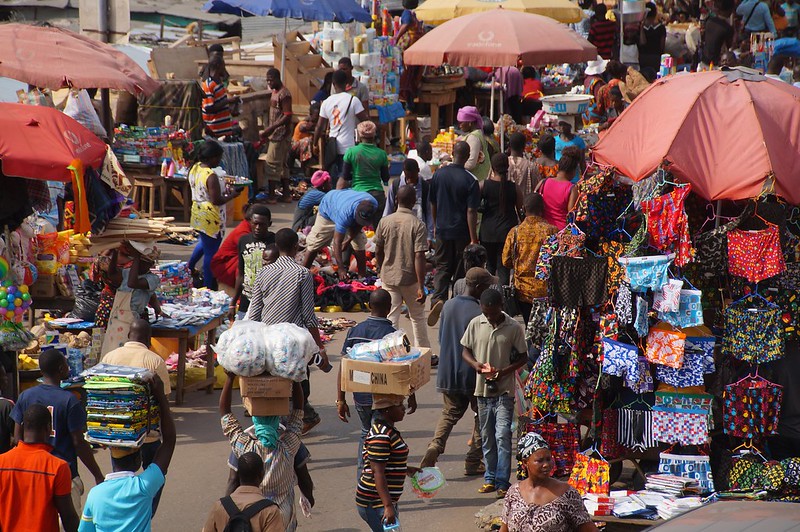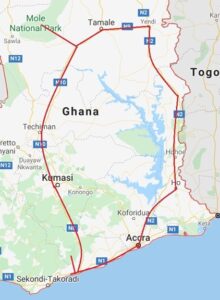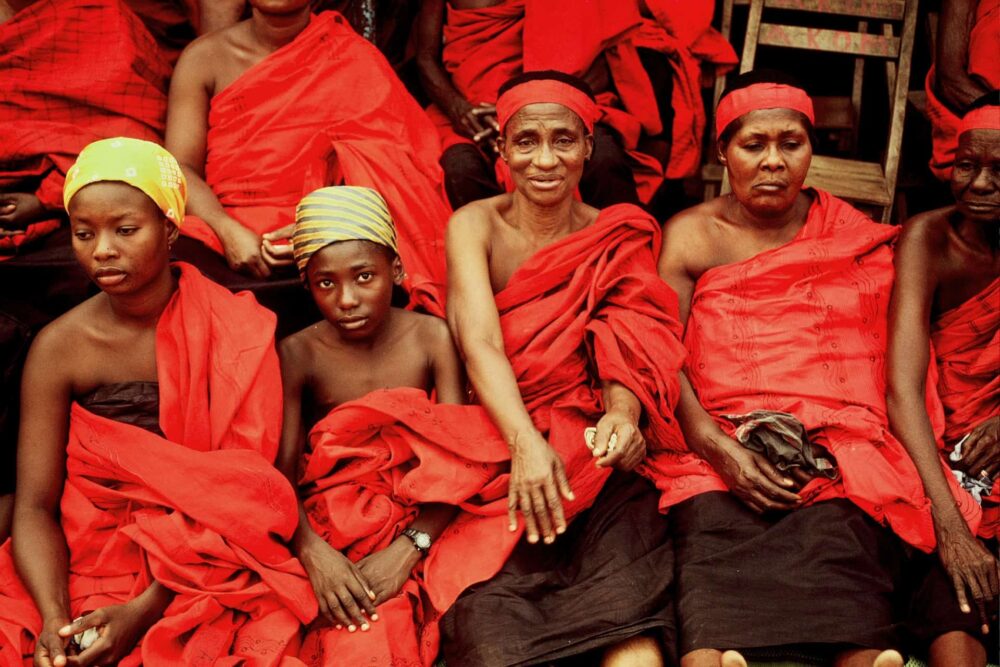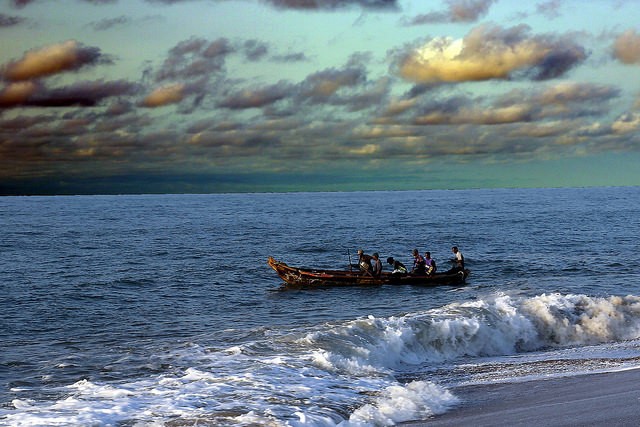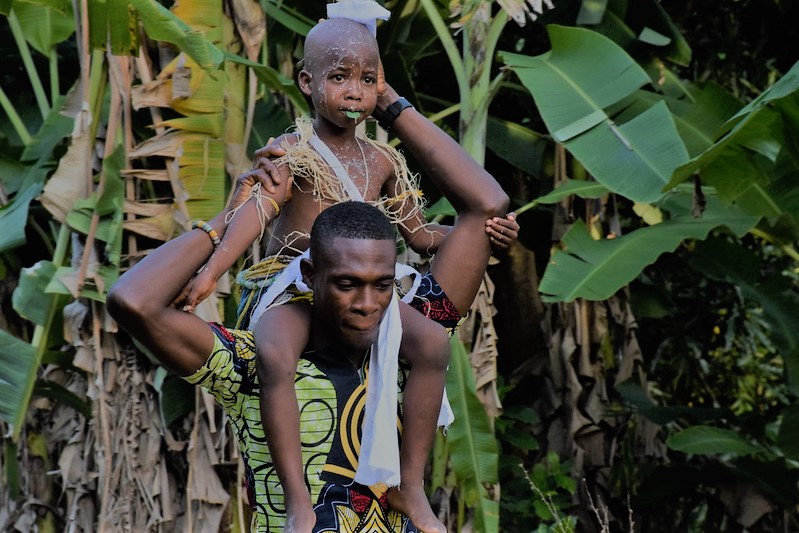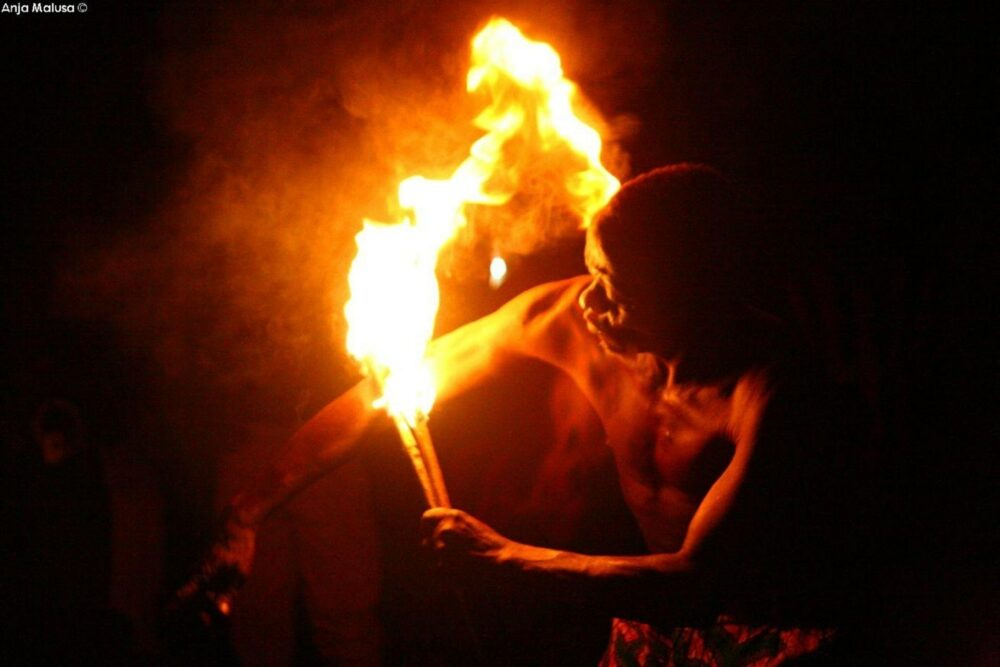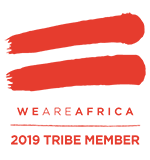Day 1: Accra in
Arrival and transfer to the hotel.
Day 2 : Glass beads, Accra – Winneba Akossombo (95km, 2h)
Morning transfer to Akossombo, the capital of the Volta Region which is the land of Krobo people. Here we attend the Dipo celebrations. Krobo people are well known for their production of glass beads, usually family’s heritages, they are shown during the Dipo celebrations. Depending on the schedule of the Dipo rite, we will visit an atelier where they make glass beads according to the tradition. The process involves different stages: scrap glass is first grounded into a fine powder, then it is meticulously made into patterns and placed into hand-made clay molds, covered in kaolin to be baked. We will have the time to learn and to produce our own beads.
Day 3 : Dipo celebrations , Akossombo (various transfers)
Dipo: the female initiation rite among the Krobo People
A female initiation rite aims at turning a girl into a woman. The entrance into womanhood is led according to the tradition and girls who successfully go through this rite can become good wives. The girls undergo a series of rituals, tests, and tasks to prove both their chastity and their being ready for adult life.
During the final steps of the Dipo rite, the girls are elegantly decorated: colorful assorted beads adorn their exposed upper parts while from waist to knee they are covered in beautiful fabrics. Their breasts are bare for everyone to see.
During the ceremony, the girls appear in public in their ceremonial dress and then their heads are shaved leaving only a small portion of hair on the head; a piece of raffia is tied around their neck to indicate they are Dipo-yi. On the next morning, the girls are given a ritual bath in a river and then are required to taste foods like sugar cane and peanuts. They will learn women’s tasks and once the rite is over, they will retour from a secret place adorned with glass beads necklaces and wrapped in beautiful textiles: it is the time of the celebration. They are the newborn! The day after they will dance for the community asking for money…
In according with the schedule of Dipo, we will join a Voodoo ceremony which is part of everyday life in the villages. The frenetic rhythm of the drums and chants of the adepts’ help calling in the voodoo spirit who then takes possession of some of the dancers. They fall into a deep trance: eyes rolling back, grimaces, convulsions, insensitivity to fire or pain. Sakpata, Heviesso, Mami Water are just some of the voodoo divinities who can show up. In a village, surrounded by the magic atmosphere of the ceremony, we will understand what people mean when they say: “In your Churches you pray God; in our shrines we become Gods!”
Day 4 : Green Land, from Akosombo to Wli (140 km – driving time 4 hr)
Early in the morning boat trip on the Volta River on the Volta River to enjoy tropical environment and meet fishing villages. The Volta River was named by Portuguese gold traders in Ghana. It was their farthest extent of exploration before returning (volta is Portuguese for “twist” or “turn”). “River of return” (perhaps because it was where ships turned around and headed for home) or “river of the bend”, in reference to its curved course. Once we crosse the Adomi Bridge we will face the famous Akosombo Dam…
We drive back to the village to attend the last ceremony of Dipo.
In the afternoon drive to Wli crossing a region of mountains, farms and forest.
Day 5 : Waterfalls, from Wli to Nkwanta (180 km – drive 4 hr)
We will discover the beautiful Wli Waterfalls, on the border with Togo, where water falls from a height of 60-80 meters. The walk to reach the falls, is approximately 45 minutes (nice flat path) and it will allow us to sight some of the 200 species of birds and the 400 species of butterflies which have been identified in the region.
Volta Region: from tropical forest to the savannah. Visits of coffee and cocoa plantations in a luxuriant region; stops in small villages inhabited by a very friendly population, happy to welcome the rare visitors.
Day 6 : Witches, from Nkwanta to Yendi (180 km – driving time 4 hr)
We still drive North.
We meet a very large settlement of … witches! All exiled from their villages because found guilty of terrible events such as the death of a teenager, a mysterious disease, or a bad harvest…they now live all together in a specific place. We will chat with them about their life and about the special shrine which protects them, “cleansing” their spirit from bad will. Their warm welcome is in dramatic contrasts with the gravity of the stories that forced them to come here.
DAY 7: Thatched roofs, from Yendi to Mole (250 km – drive 5 hr)
Further to the Northeast, in the savannah, we meet the Dagomba, a tribe that represents one eighth of the entire Ghanaian population. They are mainly farmers and have always shared their territory with other tribes such as the Konkomba. They build round clay huts with thatched roof. The house of the village chief, where the council of the elders meets, is easily recognizable thanks to its larger size and style: it has a central pole supporting the roof and the entry is framed with pieces of burned clay.
We will cross the city of Tamale.
Tamale is the capital city of the Northern region of Ghana mostly inhabited by the Mole-Dagomba linguistic group. It is a nodal city that serves as convergence zone as well as the commercial capital of the three northern regions. we continue in the bush again till reaching Mole National Park.
Day 8 : Wildlife, Walking and drive safari in Mole
Mole: the largest, oldest, and most developed park in Ghana. It covers an area of 4,912 sq. km.
The vegetation is savannah woodland with gallery forest along watercourses. 734 species of flowering plants have been recorded in the park. 90 mammalian species including elephant, buffalo, roan, kob, hartebeest, water buck, reedbuck and other antelopes.
Among the estimated 500 elephants found at the Mole National Park are three relatively “tame” individuals.
Because of the good protection given to animals in the park, the elephant have generally become used to visitors and allow them to get close during the guided tours of the Park.
Today we will enjoy 2 game activities in the parc.
Day 9: Sacred monkeys, from Tamale to Techiman (270 km – driving time 5 hr)
Early in the morning we will leave tha park for a very long drive to the South. stop at the beautiful, ancient, clay mosque of Larabanga, built in sudanese style. This mosque is considered the oldest in Ghana, probably dating back to the XV century. In the Brong Afo region we will leave the main road and follow a track to a sacred forest. The population living there considers the Monas and Colobus monkeys as their totems. As result we have the largest community of these species in the world. Walk in the forest trough giant trees and an emerald green light. We will meet plenty of sacred monkeys.
Day 10 : Ashanti Kumasi is the historical and spiritual capital of the ancient Ashanti Empire. Ashanti was one of the most powerful empires and kingdoms in Africa from 1670 to 1957 when British Gold Coast become the independent Ghana. The tribute paid today to the Asantehene (King) is the best evidence of their past splendour and strength and the still strong Ashanti pride. With nearly two million inhabitants, Kumasi is a sprawling town with a unique central market, one of the largest in Africa. All kinds of Ashanti craft (leather goods, pottery, beads, textiles called Kente cloth, etc.) are found here, along with just about every kind of tropical fruit and vegetable.
The program includes a visit to the Ashanti Cultural Centre: a rich collection of Ashanti artefacts housed in a wonderful reproduction of an Ashanti house. In the afternoon we participate – if available – in a traditional Ashanti funeral, attended by mourners wearing beautifully red or black togas. We say “funerals” but it means a “festive” celebration: thanks to this ceremony the deceased return as an ancestor and will protect his family. Relatives and friends gather, socialize, and celebrate his/her memory. The chief arrives surrounded by his court under the shade of large umbrellas while drums give rhythm to the dancers whose intricate moves are highly symbolic in war and erotic meanings.
DAY 11: Akwasidae, Kumasi (transfers)
Today is a very special day in Kumasi, because there is the Akwasidae
Akwasidae Festival In the Ashanti calendar certain days each year are set aside for a very special celebration at the Royal Palace. We will experience a great traditional ceremony in one of the last African Kingdoms, which still practices its ancient rituals in full. During the celebration, the King sits under a large colourful umbrella, adorned in vivid cloth and massive ancient jewellery (Ashanti gold jewellery are considered masterpieces of African art), surrounded by dignitaries and elders, and on the side of the King sits the Linguist holding the golden symbols of power. The position and distance from His Majesty represents all roles and positions of power in the royal court. The ceremony starts with a procession: attendants bringing gifts, story tellers reciting the deeds of the past Kings, drummers and ivory trumpet players, sword bearers, armed guards, carriers of ostrich feather fans, high fetish priests, and corpulent women dressed in vivid red performing dance with erotic symbolism. The Queen Mother joins the ceremony surrounded by her court. We will experience the splendour and intense atmosphere of one of last great African Monarchies of the forests.
We visit the Royal Palace Museum hosting a unique collection of gold jewels worn by the Ashanti court.
DAY 12: Slaves’ Castles, from Kumasi to Anomabu (250 km – driving time 5 hr)
Drive to the coast. The coast of Ghana (formerly known as Gold Coast) has more than 50 ancient forts and castles, reminiscent of the ancient gold, ivory and slave trade. We reach Elmina Castle, the oldest European building in Africa, erected by the Portuguese in the 15th century. At different times, the castle has been used as a warehouse to trade gold, ivory, and eventually slaves. The castle we visit today is the result of successive extension works and is recognized as a UNESCO World Heritage site. The old Dutch Cemetery in Elmina goes back to 1806. Outside the castle, there is a spectacular fishing village with lots of large colourful fishing boats – every day these large wooden pirogues conducted by skilled fishermen across strong ocean waves and currents, “fighting” to earn a living. In a nearby village, we will see the Posuban, the shrines of the ancient “Asafo companies” – the warriors who used to put their offerings on the large colourful statues.
DAY 13: Beach and forest, from Anomabu to Kakum – Cape Coast – Anomabu (170 km – driving time 3 hr)
In the morning, we will experience the thrill of a “canopy walk” right in the deep forest of the Kakum National Park: one of the world highest suspended rope bridges held by steel cables. Perched 37 meters (120 feet) above the earth, you will enjoy a stunning view of the rainforest. Instead of unveiling their trunks, trees will reveal their tops!
Rest of day at leisure relaxing at the beach!
DAY 14: Metropolis, from Anomabu to Accra (180 km – driving time 4 hr)
Accra, the capital of Ghana, has kept its unique identity despite the fast-paced development of the last decades with its modern buildings and large avenues. The luxuriant administrative area, punctuated with elegant villas built during the first half of the 19th century, reminds us that was the most flourishing colony in Africa.
We explore James Town historic neighbourhood, inhabited by Ga people. Facing the Ocean is where native people life fully unfolds: a village surrounded by the city! Here all economic activities follow very different rules from the ones governing “the city” (business area), just a few hundred meters away. We continue with the visit of a workshop specialized in “fantasy coffins”. These unique handcrafted coffins can reflect any shape: fruits, animals, fish, cars, airplanes…. the only limit being imagination! Started in Accra, these flamboyant coffin designs are by now collected worldwide and exposed in museums.
In the evening transfer to the airport for the flight out.

